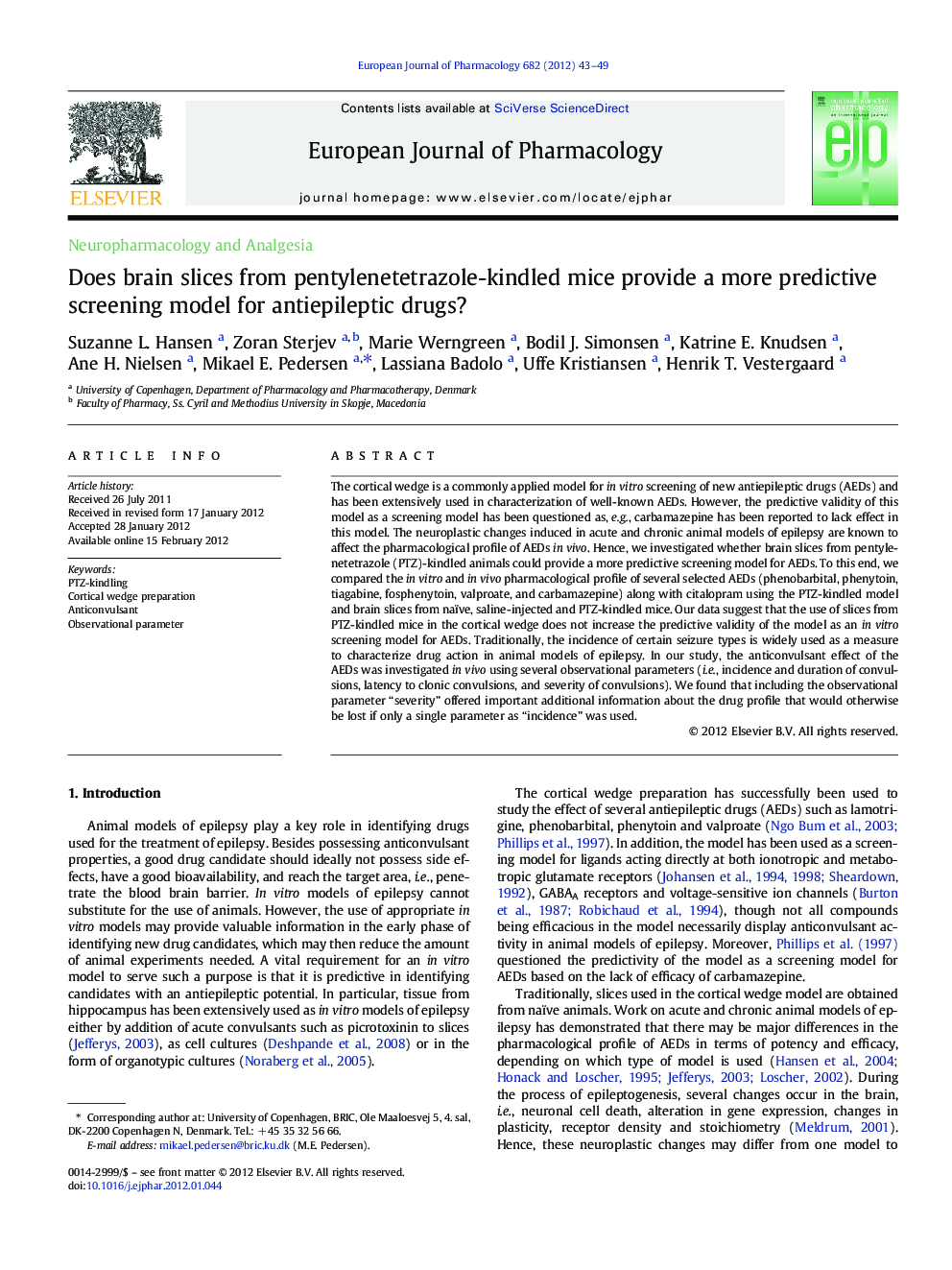| کد مقاله | کد نشریه | سال انتشار | مقاله انگلیسی | نسخه تمام متن |
|---|---|---|---|---|
| 5829686 | 1558999 | 2012 | 7 صفحه PDF | دانلود رایگان |
عنوان انگلیسی مقاله ISI
Does brain slices from pentylenetetrazole-kindled mice provide a more predictive screening model for antiepileptic drugs?
دانلود مقاله + سفارش ترجمه
دانلود مقاله ISI انگلیسی
رایگان برای ایرانیان
کلمات کلیدی
موضوعات مرتبط
علوم زیستی و بیوفناوری
علم عصب شناسی
علوم اعصاب سلولی و مولکولی
پیش نمایش صفحه اول مقاله

چکیده انگلیسی
The cortical wedge is a commonly applied model for in vitro screening of new antiepileptic drugs (AEDs) and has been extensively used in characterization of well-known AEDs. However, the predictive validity of this model as a screening model has been questioned as, e.g., carbamazepine has been reported to lack effect in this model. The neuroplastic changes induced in acute and chronic animal models of epilepsy are known to affect the pharmacological profile of AEDs in vivo. Hence, we investigated whether brain slices from pentylenetetrazole (PTZ)-kindled animals could provide a more predictive screening model for AEDs. To this end, we compared the in vitro and in vivo pharmacological profile of several selected AEDs (phenobarbital, phenytoin, tiagabine, fosphenytoin, valproate, and carbamazepine) along with citalopram using the PTZ-kindled model and brain slices from naïve, saline-injected and PTZ-kindled mice. Our data suggest that the use of slices from PTZ-kindled mice in the cortical wedge does not increase the predictive validity of the model as an in vitro screening model for AEDs. Traditionally, the incidence of certain seizure types is widely used as a measure to characterize drug action in animal models of epilepsy. In our study, the anticonvulsant effect of the AEDs was investigated in vivo using several observational parameters (i.e., incidence and duration of convulsions, latency to clonic convulsions, and severity of convulsions). We found that including the observational parameter “severity” offered important additional information about the drug profile that would otherwise be lost if only a single parameter as “incidence” was used.
ناشر
Database: Elsevier - ScienceDirect (ساینس دایرکت)
Journal: European Journal of Pharmacology - Volume 682, Issues 1â3, 5 May 2012, Pages 43-49
Journal: European Journal of Pharmacology - Volume 682, Issues 1â3, 5 May 2012, Pages 43-49
نویسندگان
Suzanne L. Hansen, Zoran Sterjev, Marie Werngreen, Bodil J. Simonsen, Katrine E. Knudsen, Ane H. Nielsen, Mikael E. Pedersen, Lassiana Badolo, Uffe Kristiansen, Henrik T. Vestergaard,